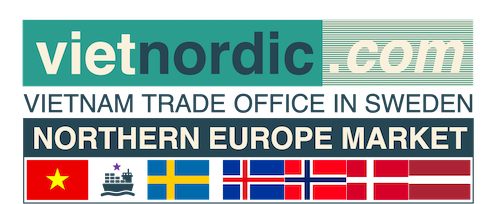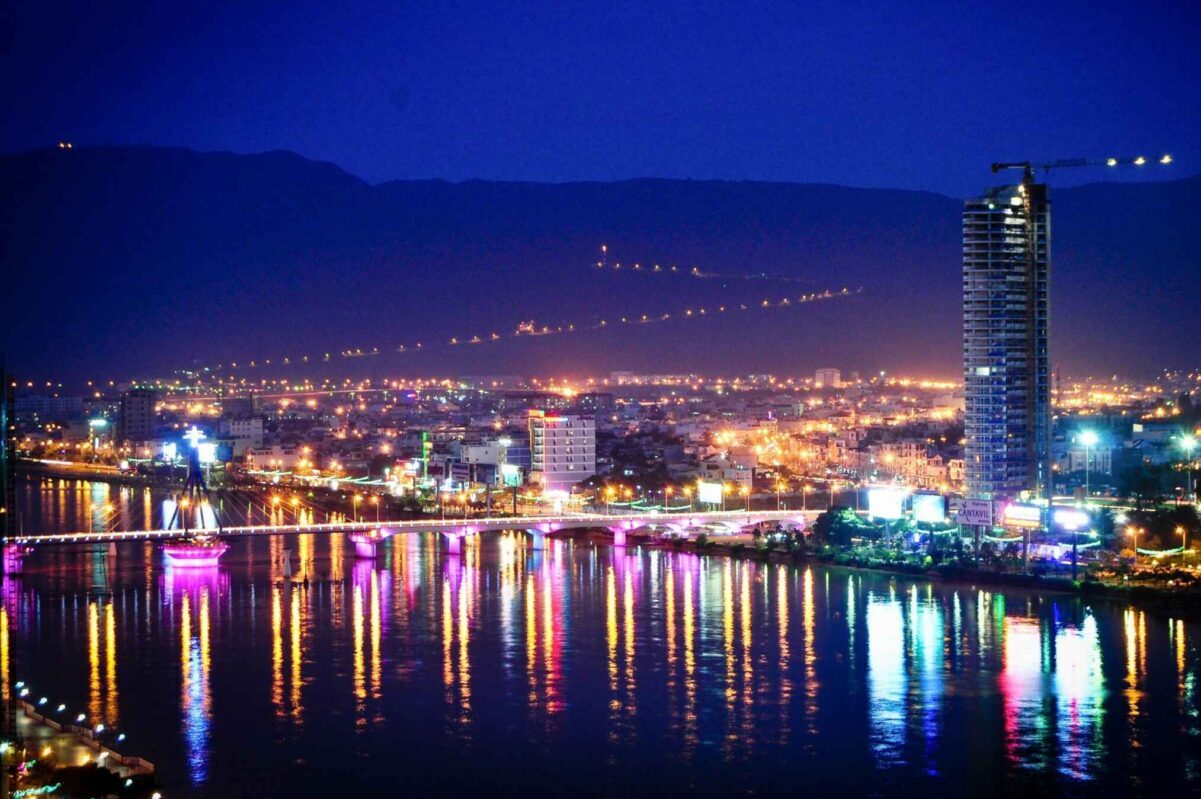Da Nang has emerged as an attractive investment destination for domestic and international investors, following only the capital Hanoi and commercial hub Ho Chi Minh City.
Da Nang is one of the five largest cities in Vietnam and serves as a gateway to the Central Region, which is rapidly industrializing. The city has undergone significant changes in recent years, underpinned by a sustainable approach to urban development. This has helped the city produce sustained economic growth, while also maintaining its reputation as the ‘most livable city’ in the country.
Da Nang’s economic profile
Danang is home to 878 foreign-invested projects with a total investment capital of US$5.7 billion. In the first eight months of 2021, the city attracted over $162 million in foreign capital, with 29 newly-registered projects and 15 adjusted capital projects, as per the Ministry of Planning and Investment (MPI).
Underlining the China plus one strategy, recently a US-based fabrication company picked Da Nang for a US$60 million systems facility after looking at several options in the Central Region.
A Hong Kong-based company manufacturing sporting goods, ground pools, and airbeds received approval to build a US$12 million factory at the Hoa Khan Industrial Zone, while a Japanese firm plans to establish a US$35 million R&D center at the Da Nang Hi-Tech Park. These examples underline Da Nang’s attractiveness as an investment destination despite the pandemic.
Vietnam Briefing examines why Da Nang’s ranks high on the list for foreign investors, its top growth drivers, and competitive industries.
Top growth drivers
Da Nang has four main drivers that have encouraged its healthy business environment: livability, labor, infrastructure, and regional connectivity.
Livability
Da Nang’s competitive economy has been complemented by the city’s many attractive features. The city is often referred to as the most livable city in the country and is situated among several UNESCO World Heritage Sites, including Hoi An, Hue, and My Son Sanctuary.
The city is known for its clean environment, pristine beaches, and well-established public services. It is one of the cleanest cities in Vietnam and aims to be one of the most environmentally friendly cities in the country.
The cost of living in Da Nang is relatively cheaper compared to Ho Chi Minh City. As such, the city is relatively safer compared to bigger urban centers in Vietnam. The following cost comparison between Da Nang and Ho Chi Minh City from Numbeo is illustrative:
- Apartment rent prices are 13.28 percent lower than in Ho Chi Minh;
- Restaurant prices in Da Nang are 10.85 percent lower than in Ho Chi Minh;
- Transportation costs in Da Nang are 9 percent lower than in Ho Chi Minh;
- Entertainment costs in Da Nang are 2 percent lower than in Ho Chi Minh.
Labor
Da Nang’s workforce accounts for more than 51 percent of the population. Its young and dynamic workforce has benefitted from the city’s educational offerings: there are at least three international schools in the city and 44 vocational training schools or centers.
Investment in Da Nang is creating more jobs – and competition for talent – in tourism, real estate, education, entertainment, and IT. While this has helped attract workers to the area, some businesses find it difficult to hire and retain high-tech workers and senior managers.
Infrastructure
Da Nang’s growth can partly be attributed to its position as a regional transportation hub. The city is known for its broad roads, major highways, seaports, and airport, which connect Da Nang to the rest of Vietnam and other Asian countries. The synchronized transport network allows for easy connectivity, which facilitates the development of economic activities and investments. In this year’s Provincial Competitive Index (PCI), Da Nang was ranked third best for its infrastructure ranking higher than Ho Chi Minh City and Hanoi. The PCI noted that places like Da Nang, which are well-governed, generally have higher quality infrastructure.
Da Nang’s inner-city and suburban road networks are continuously expanding, connecting the city center with neighboring suburbs and surrounding areas. The recently completed 80 miles (130km) long Da Nang – Quang Ngai Highway facilitates freight and cargo contributing to the economic development of the region. The highway also connects Da Nang with Chu Lai and Dung Quang Economic Zones. The upcoming La Son – Tuy Loan Highway, which will connect Thua Thien Hue province to Da Nang, will further promote growth and economic development in Da Nang as well as the provinces in the Central Region.
The Da Nang International Airport is located is within 3 miles (5km) of the city center and is the third busiest airport in the country, after Hanoi and Ho Chi Minh City. The facility is connected to 48 international air routes with 462 flights per week connecting the city with China, Japan, South Korea, Thailand, and Taiwan before COVID-19.
In 2018, the local government approved the city’s logistics infrastructure development planning – with a vision towards 2045. Authorities forecast that the airport and seaports will handle 80 percent of cargo traffic through Da Nang by 2045. The plan, worth US$606 million, aims to build the city into a key logistics service center in the Central Region, becoming a traffic hub for the entire country.
Regional connectivity
Da Nang serves as a gateway to Vietnam’s Central Region, which is emerging as a key destination for foreign investors in its own right. Da Nang is sandwiched between Thua Thien-Hue province in the north and Quang Nam province in the south. Their close proximity to Da Nang has encouraged regional growth as investors look to diversify their manufacturing hubs.
Da Nang’s competitive industries
Tourism
While COVID-19 has disrupted travel plans and tourism, Da Nang remains an important tourism hub located close to several UNESCO Heritage sites. The government remains keen to promote tourism after the pandemic is brought under control and to live with a ‘new normal’. To cater to a diverse set of visitors, tourist facilities are continuously improving to meet international standards. Business-class hotels and resorts managed by Hyatt, InterContinental, and Novotel have a presence.
To be sustainable, the city has also promoted eco-tourism to enhance the competitiveness of its offerings. City officials are working to expand the meetings, incentives, conferences and exhibitions (MICE) sectors by working with ministries, business firms, and diplomats. These initiatives help illustrate the trajectory of the sector, and some of the opportunities for investors, particularly regarding the need for hotels, resorts, entertainment centers, and supporting industries.
Airport and seaport logistics
The increase in tourists and businesses before COVID-19 increased pressure on Da Nang’s airport and seaports. Da Nang city authorities proposed to build a third terminal at Da Nang International Airport to meet increased demand and future growth requirements. As the airport expands, this offers investors scope to become involved with infrastructural development, logistical services, and related commercial activity, such as retails shops, hotels, and restaurants that cater to travelers and traders.
Da Nang also plans to become an ASEAN logistics center by 2030. To meet these goals, the government is investing in its seaports, which will be the primary growth driver for this project. The city’s seaport system is expected to handle 29 million tons of cargo by 2030. Investors have already poured capital to build the Lieu Chieu deepwater seaport, while roads and railways are also being developed to better connect to seaports in the area.
Retail
Da Nang is a popular shopping destination and the retail market in the city is growing. The city is peppered with domestic and foreign retailers, such as VinMart as well as Lotte Mart, respectively. Convenience stores are the fastest-growing segment in the retail market. In addition, with the number of foreigners visiting or working in the city, there has also been an increase in specialized markets, including a market for furniture and preserved foods.
Son Tra district accounts for the lion’s share of retail at 45 percent, followed by Hai Chau and Tanh Khe districts at 40 and 15 percent, respectively.
Education
The education sector is open for foreign investment and there is a large demand for high-quality education. Da Nang has 36 universities and colleges, churning out 44,277 graduates a year.
Decree 86, which took effect in August 2018, is further expected to help the education sector by allowing foreign investors to build international schools. The reform also provides clarity on cooperation between local and foreign players – giving confidence to local schools to work with foreign partners to develop services – as well as guidelines on the issuance of certificates by foreign language training centers.
Hi-tech manufacturing
With the government’s push to make Da Nang a smart city, several firms – such as EU-based ABB – have signed agreements with local authorities to achieve this goal. This has created a demand to produce high-tech devices, such as chips and physical devices, connected to ICT to monitor data and meet smart city requirements.
Investors specializing in high-tech manufacturing should consider beginning operations at the Da Nang High-tech park due to government incentives tailored to it. Beyond these incentives, investors would find a growing ecosystem for high-tech manufacturing that has been increasing steadily.
IT
Da Nang is becoming a magnet for domestic and foreign IT investors. The city is one of the leading places for developing the IT and software industry in the country. The IT sector contributes around 5.5 percent to Da Nang’s GDP. Of the 700 IT businesses in the city, around 43 percent specialize in software production and outsourcing. Large companies, such as FPT Software, Gameloft, LogiGear, Global Cybersoft, and Asnet, provide software outsourcing services for partner firms in Japan, North America, and Europe.
These companies have benefitted from educational facilities in the city. The University of Da Nang has partnered with several universities in the US to provide training in digital systems, automated production and automation, software engineering, and industrial computing. The abundance of engineers trained by local universities and software technology centers has underpinned the success of the area’s software outsourcing industry.
Beyond the local talent pool, Da Nang is the most advanced telecommunications hub in the country. It has a citywide wireless broadband network with about 350 access points across the city. As a telecom hub, Da Nang links Vietnam with nearly 40 countries in Europe and Asia through an undersea communications cable and an international transmission line of 10Gbps.

